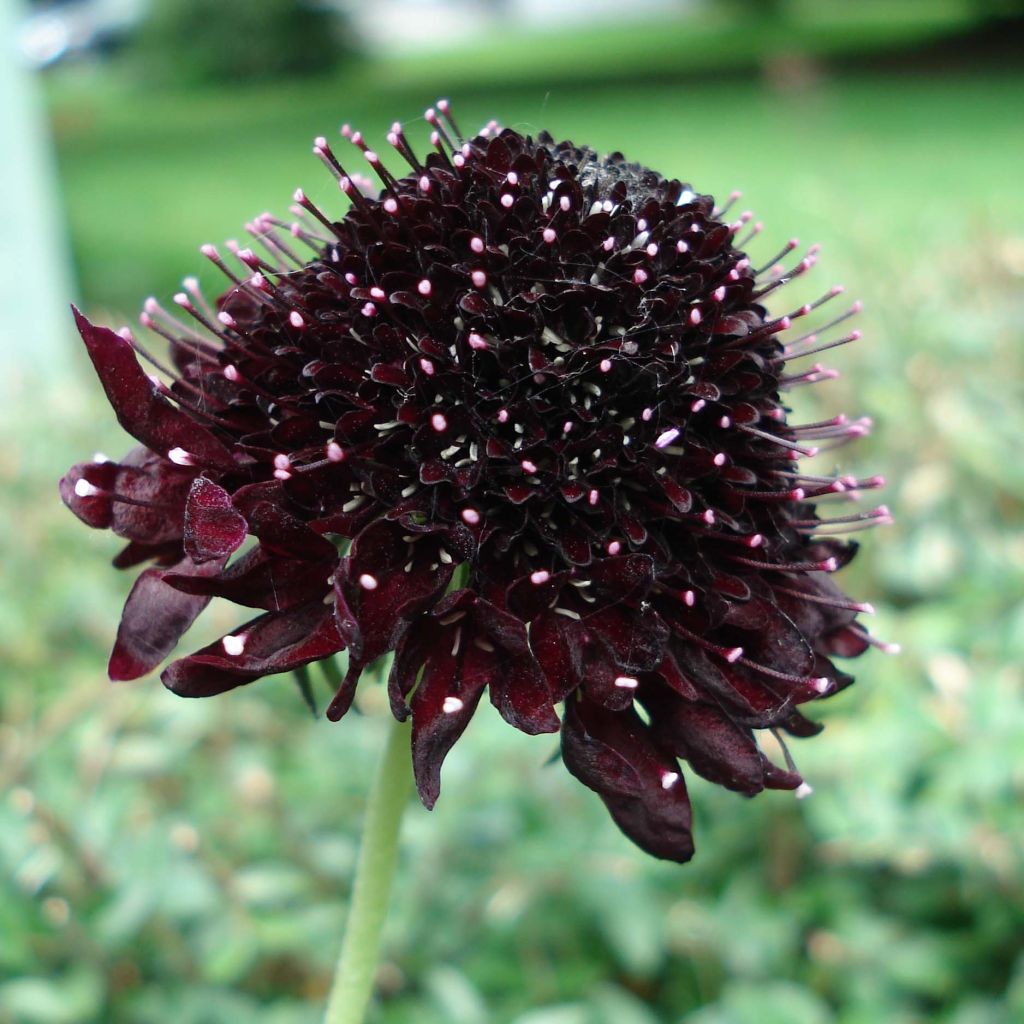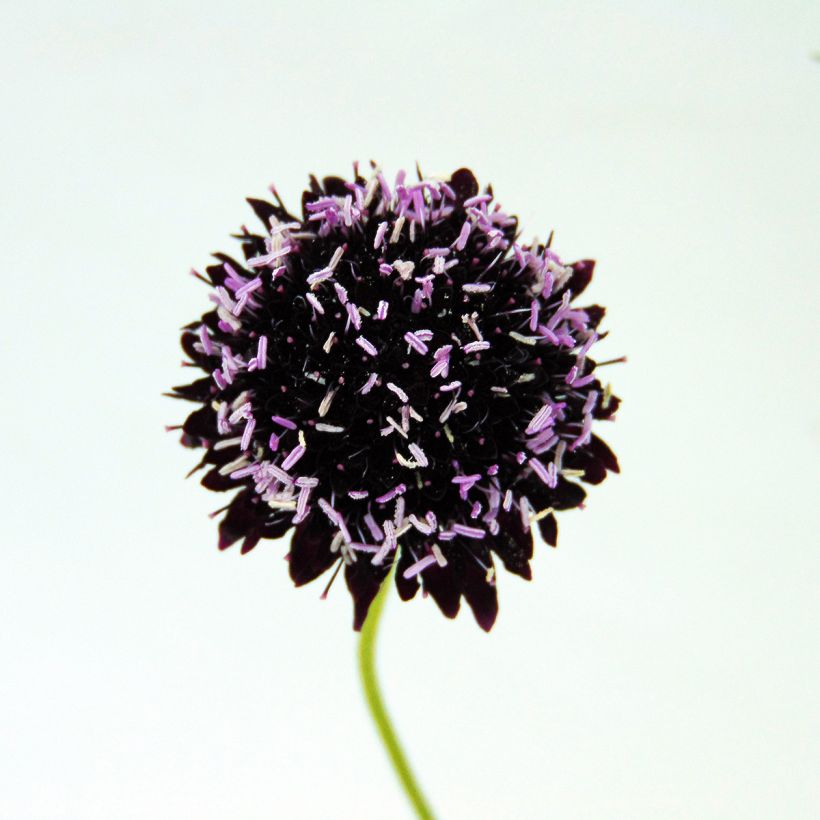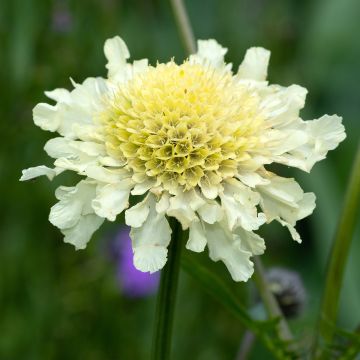

Scabiosa atropurpurea Chile Black


Scabiosa atropurpurea Chile Black


Scabiosa atropurpurea Chile Black


Scabiosa atropurpurea Chile Black


Scabiosa atropurpurea Chile Black
View more pictures
Hide images

Jean-Michel L.

Jean-Michel L. • BE
Scabiosa atropurpurea Chile Black
Scabiosa atropurpurea Chile Black
Sweet Scabious
The cardboard was still very thin and even marked FRAGILE in red on it, Chronopost took no precautions and the cardboard arrived crushed and open. Thankfully, the plant was better packed and it arrived intact... Just a little less soil. That being said, the plants are very small and struggle to really become beautiful plants in the first year... and my scabious flowers have not succeeded over several years... a shame.
Claude, 08/04/2024
Special offer!
Receive a €20 voucher for any order over €90 (excluding delivery costs, credit notes, and plastic-free options)!
1- Add your favorite plants to your cart.
2- Once you have reached €90, confirm your order (you can even choose the delivery date!).
3- As soon as your order is shipped, you will receive an email containing your voucher code, valid for 3 months (90 days).
Your voucher is unique and can only be used once, for any order with a minimum value of €20, excluding delivery costs.
Can be combined with other current offers, non-divisible and non-refundable.
Home or relay delivery (depending on size and destination)
Schedule delivery date,
and select date in basket
This plant carries a 12 months recovery warranty
More information
We guarantee the quality of our plants for a full growing cycle, and will replace at our expense any plant that fails to recover under normal climatic and planting conditions.

Would this plant suit my garden?
Set up your Plantfit profile →
Description
Scabiosa Chile Black, also known as black scabious, has dark flowers of beautiful intensity. These flowers are at the end of thin, branching stems with beautiful scented heads, evoking light pompoms or a jewels, dotted with white stamens. This short-lived bushy perennial blooms for a long time if faded flowers are removed. Perfectly hardy, it is a truly reliable and easy-to-grow plant, in sunny and well-drained soil. It self-seeds easily in the garden.
Scabiosa atropurpurea, also known as dark purple scabious, is a plant of the Dipsacaceae family, native to southern Europe, developing from a deep and extensive root system. This plant is often grown as an annual, although it is actually a short-lived perennial. The selection 'Chile Black' stands out for its floribundance and particularly dark colour. It forms a robust, bushy and erect clump, 50 to 60 cm (20 to 24in) tall, 20 to 30 cm (8 to 12in) wide, with very rapid growth. The deciduous foliage is composed of finely cut, coarsely dentate, lanceolate leaves, with a grey-blue tint. It originates at the collar of the plant, forming a flat rosette close to the ground. Flowering takes place from July to October. Each plant produces up to 400 flowers and many stems, each carrying a single domed floral head, 5 cm (2in) in diameter, composed of numerous tiny black-purple flowers. The stamens resemble white and miniature pinheads. The fragrant flowering is highly melliferous and nectariferous.
This queen of old-fashioned gardens, somewhat neglected in recent years, is making a strong comeback, with extraordinary colours like the Chile Black variety, which is also remarkably robust. They are graceful and elegant. Scabiosa atropurpurea is an excellent choice for borders, but also for making bouquets. Combine these plants with Sweet Williams, Damask nigellas, cosmos, cornflowers, asters, grasses or rudbeckias to create an interesting contrast... Rustic bouquets can be composed with the flowers of scabious, which last 10 days in a vase.
Scabiosa atropurpurea Chile Black in pictures






Flowering
Foliage
Plant habit
Botanical data
Scabiosa
atropurpurea
Chile Black
Dipsacaceae
Sweet Scabious
Cultivar or hybrid
Other Scabiosa - Pincushion
View all →Planting and care
Scabious prefer slightly chalky, well-drained soil. Water them regularly, but not excessively. Sometimes they have a tendency to decline after 2 or 3 seasons. To keep them, enrich with organic fertilizer, and ensure they do not suffer from excess moisture in winter by lightening the planting substrate with sand.
Regularly cutting the faded flowers will promote a long flowering period. This flower easily self-seeds in light terrain, not always reliably.
Planting period
Intended location
Care
Planting & care advice
-
, onOrder confirmed
Reply from on Promesse de fleurs
Similar products
Haven't found what you were looking for?
Hardiness is the lowest winter temperature a plant can endure without suffering serious damage or even dying. However, hardiness is affected by location (a sheltered area, such as a patio), protection (winter cover) and soil type (hardiness is improved by well-drained soil).

Photo Sharing Terms & Conditions
In order to encourage gardeners to interact and share their experiences, Promesse de fleurs offers various media enabling content to be uploaded onto its Site - in particular via the ‘Photo sharing’ module.
The User agrees to refrain from:
- Posting any content that is illegal, prejudicial, insulting, racist, inciteful to hatred, revisionist, contrary to public decency, that infringes on privacy or on the privacy rights of third parties, in particular the publicity rights of persons and goods, intellectual property rights, or the right to privacy.
- Submitting content on behalf of a third party;
- Impersonate the identity of a third party and/or publish any personal information about a third party;
In general, the User undertakes to refrain from any unethical behaviour.
All Content (in particular text, comments, files, images, photos, videos, creative works, etc.), which may be subject to property or intellectual property rights, image or other private rights, shall remain the property of the User, subject to the limited rights granted by the terms of the licence granted by Promesse de fleurs as stated below. Users are at liberty to publish or not to publish such Content on the Site, notably via the ‘Photo Sharing’ facility, and accept that this Content shall be made public and freely accessible, notably on the Internet.
Users further acknowledge, undertake to have ,and guarantee that they hold all necessary rights and permissions to publish such material on the Site, in particular with regard to the legislation in force pertaining to any privacy, property, intellectual property, image, or contractual rights, or rights of any other nature. By publishing such Content on the Site, Users acknowledge accepting full liability as publishers of the Content within the meaning of the law, and grant Promesse de fleurs, free of charge, an inclusive, worldwide licence for the said Content for the entire duration of its publication, including all reproduction, representation, up/downloading, displaying, performing, transmission, and storage rights.
Users also grant permission for their name to be linked to the Content and accept that this link may not always be made available.
By engaging in posting material, Users consent to their Content becoming automatically accessible on the Internet, in particular on other sites and/or blogs and/or web pages of the Promesse de fleurs site, including in particular social pages and the Promesse de fleurs catalogue.
Users may secure the removal of entrusted content free of charge by issuing a simple request via our contact form.
The flowering period indicated on our website applies to countries and regions located in USDA zone 8 (France, the United Kingdom, Ireland, the Netherlands, etc.)
It will vary according to where you live:
- In zones 9 to 10 (Italy, Spain, Greece, etc.), flowering will occur about 2 to 4 weeks earlier.
- In zones 6 to 7 (Germany, Poland, Slovenia, and lower mountainous regions), flowering will be delayed by 2 to 3 weeks.
- In zone 5 (Central Europe, Scandinavia), blooming will be delayed by 3 to 5 weeks.
In temperate climates, pruning of spring-flowering shrubs (forsythia, spireas, etc.) should be done just after flowering.
Pruning of summer-flowering shrubs (Indian Lilac, Perovskia, etc.) can be done in winter or spring.
In cold regions as well as with frost-sensitive plants, avoid pruning too early when severe frosts may still occur.
The planting period indicated on our website applies to countries and regions located in USDA zone 8 (France, United Kingdom, Ireland, Netherlands).
It will vary according to where you live:
- In Mediterranean zones (Marseille, Madrid, Milan, etc.), autumn and winter are the best planting periods.
- In continental zones (Strasbourg, Munich, Vienna, etc.), delay planting by 2 to 3 weeks in spring and bring it forward by 2 to 4 weeks in autumn.
- In mountainous regions (the Alps, Pyrenees, Carpathians, etc.), it is best to plant in late spring (May-June) or late summer (August-September).
The harvesting period indicated on our website applies to countries and regions in USDA zone 8 (France, England, Ireland, the Netherlands).
In colder areas (Scandinavia, Poland, Austria...) fruit and vegetable harvests are likely to be delayed by 3-4 weeks.
In warmer areas (Italy, Spain, Greece, etc.), harvesting will probably take place earlier, depending on weather conditions.
The sowing periods indicated on our website apply to countries and regions within USDA Zone 8 (France, UK, Ireland, Netherlands).
In colder areas (Scandinavia, Poland, Austria...), delay any outdoor sowing by 3-4 weeks, or sow under glass.
In warmer climes (Italy, Spain, Greece, etc.), bring outdoor sowing forward by a few weeks.

























































